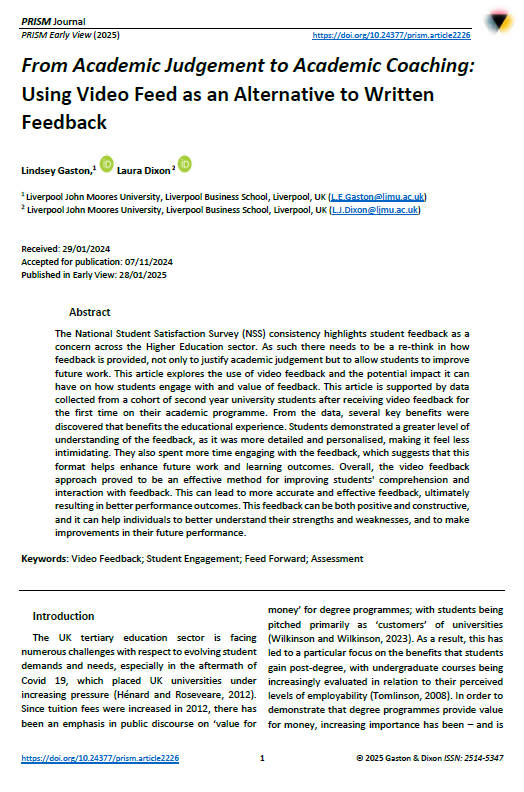From Academic Judgement to Academic Coaching: Using Video Feed as an Alternative to Written Feedback.
DOI:
https://doi.org/10.24377/prism.article2226Keywords:
Video Feedback, Student Engagement, Feed Forward, AssessmentAbstract
The National Student Satisfaction Survey (NSS) consistency highlights student feedback as a concern across the Higher Education sector. As such there needs to be a re-think in how feedback is provided, not only to justify academic judgement but to allow students to improve future work. This article explores the use of video feedback and the potential impact it can have on how students engage with and value of feedback. This article is supported by data collected from a cohort of second year university students after receiving video feedback for the first time on their academic programme. From the data, several key benefits were discovered that benefits the educational experience. Students demonstrated a greater level of understanding of the feedback, as it was more detailed and personalised, making it feel less intimidating. They also spent more time engaging with the feedback, which suggests that this format helps enhance future work and learning outcomes. Overall, the video feedback approach proved to be an effective method for improving students' comprehension and interaction with feedback. This can lead to more accurate and effective feedback, ultimately resulting in better performance outcomes. This feedback can be both positive and constructive, and it can help individuals to better understand their strengths and weaknesses, and to make improvements in their future performance.
Downloads

Downloads
Published
Issue
Section
License
Copyright (c) 2025 Lindsey Gaston, Laura Dixon

This work is licensed under a Creative Commons Attribution-NonCommercial-NoDerivatives 4.0 International License.
Authors retain copyright and grant the journal the right of first publication with the work.
The version of the article published as part of this issue is licensed under a Creative Commons Attribution-NonCommercial-NoDerivatives 4.0 International Licence and allows others to read, download, copy, distribute, print, search, link to the full text of the first version of this article, or to use it for any other lawful purpose in accordance with the license. The author maintains copyright for the article published in this journal.
This journal provides immediate open access to its content and has no submission or publication fees.


